VBLHEP accelerators of charged particles can be used as source of neutrons
Media, 15 August 2022
The NICA accelerator complex under construction at JINR will accelerate protons and ions of chemical elements of a wide spectrum: deuterons, carbon nuclei, and others, up to gold. At the same time, with the help of the megascience complex, it is already possible to produce various types of particles, including neutrons of much higher energies than those at the IBR-2 reactor and the IRENE facility in the Laboratory of Neutron Physics. High energy neutrons, in their turn, can be employed for comprehensive testing of neutron detectors, which will be used at JINR accelerators and in other world scientific centres.
The development of neutron detection detectors provides additional important information for purposes of fundamental science. Neutrons, like other particles, are actively studied by scientists. They contain information about interactions that will be studied, in particular, at the NICA accelerator complex. The comprehensive testing of neutron detectors consists in checking their operability and determining characteristics, such as efficiency, coefficients of signal conversion from the detector into energy, coordinates, etc. In addition, the study of detectors includes finding their optimal operation modes for use in particular tasks.
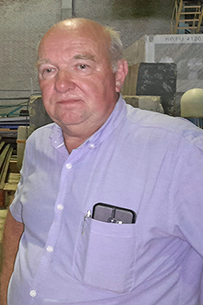 The testing of neutron detectors on the beam extraction from the Nuclotron in the area of the MARUSYA facility (Magnetic Radiation Universal Spectrometer) has been conducted at JINR since 2011. Head of the Sector of Theoretical and Methodological Support of Projects of the Scientific and Experimental Department of Heavy Ion Physics at the LHC of the Laboratory of High Energy Physics JINR, Doctor of Physics and Mathematics Anton Baldin explained that MARUSYA had been launched in the 90s and served the tasks of fundamental science.
The testing of neutron detectors on the beam extraction from the Nuclotron in the area of the MARUSYA facility (Magnetic Radiation Universal Spectrometer) has been conducted at JINR since 2011. Head of the Sector of Theoretical and Methodological Support of Projects of the Scientific and Experimental Department of Heavy Ion Physics at the LHC of the Laboratory of High Energy Physics JINR, Doctor of Physics and Mathematics Anton Baldin explained that MARUSYA had been launched in the 90s and served the tasks of fundamental science.
“The MARUSYA channel consists of two parts. One part consists of a magnet and two lenses. It is an independent magneto-optical spectrometer that can rotate around the target. The magnet turns the particle beam from the Nuclotron farther along the beam extraction channel,” he said. To date, a test zone of the SPD detector has been created based on the MARUSYA facility, which can also be used to test both neutron detectors and charged particle detectors. In fact, it is possible to check the operability of the detectors throughout the entire length of the beam extraction channel from the Nuclotron (126 meters).
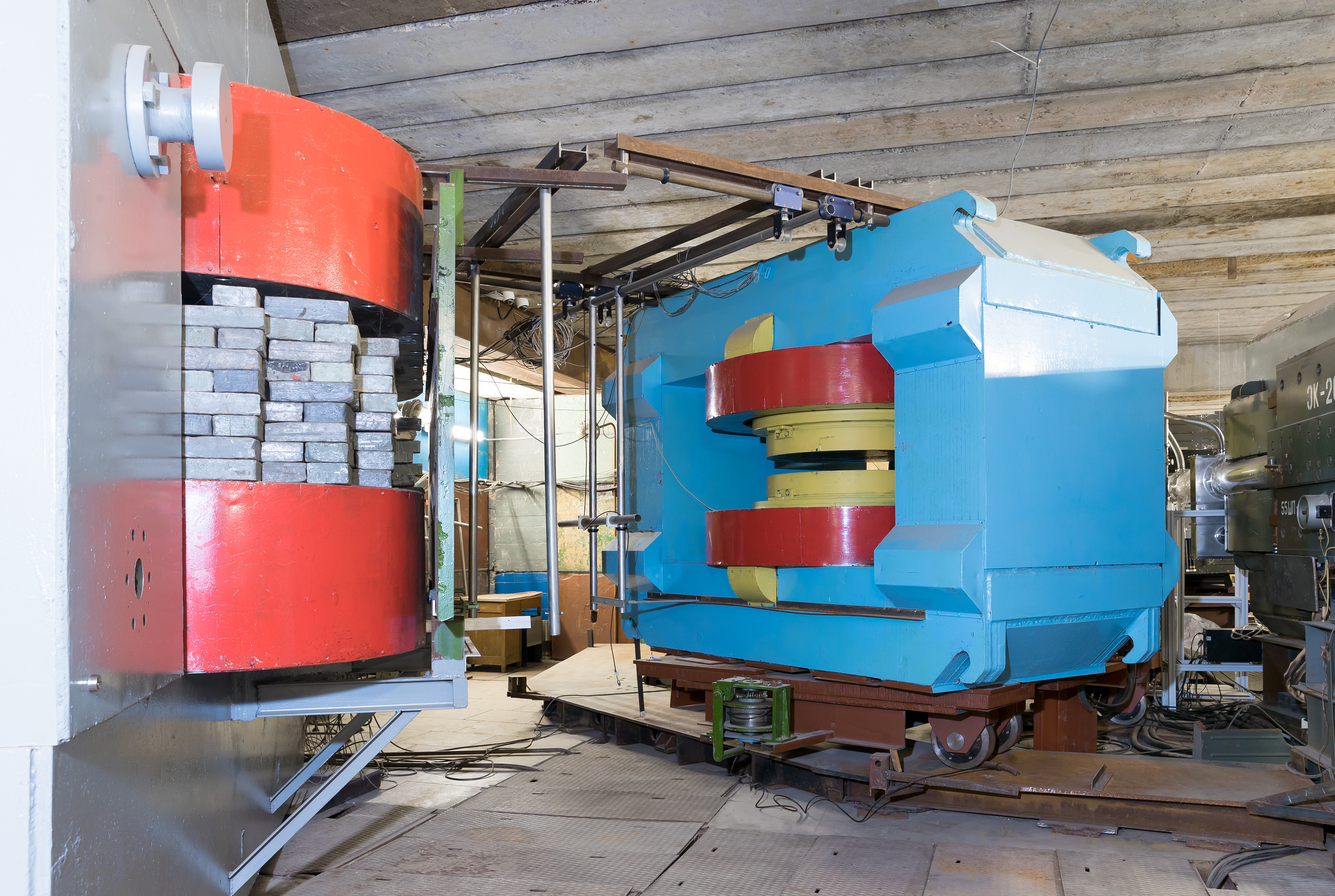 Bending magnet of MARUSYA facility
Bending magnet of MARUSYA facility
A JINR preprint 2019 focuses on testing neutron detectors, in which a group of authors have showed how these tests are carried out when deuterons are accelerated in the energy range from hundreds of MeV to several GeV. Dmitry Dryablov, a co-author of the article and researcher of the VBLHEP Sector of Correlation Research, spoke more about this kind of research.
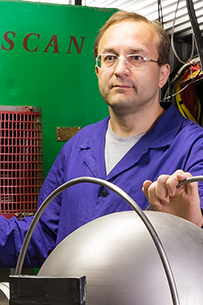 He explained that a charged particle beam sequentially accelerated in two synchrotron accelerators, i.e. the Booster and the Nuclotron, would be extracted to the NICA collider in the future. But currently, another capability has been implemented, i.e. the beam extraction to a neighbouring building (building 205 VBLHEP) with experimental facilities using fixed targets.
He explained that a charged particle beam sequentially accelerated in two synchrotron accelerators, i.e. the Booster and the Nuclotron, would be extracted to the NICA collider in the future. But currently, another capability has been implemented, i.e. the beam extraction to a neighbouring building (building 205 VBLHEP) with experimental facilities using fixed targets.
High energy neutrons are produced along with other particles in the beam extraction channel from the Nuclotron. To test neutron detectors, it is high energy neutrons that are required, which cannot be produced at the IBR-2 reactor or the IREN facility in FLNP, but can be produced at the VBLHEP accelerator complex. “We can test neutron detectors on high energy neutrons, because such energies will be used in those experiments in which these detectors are employed,” Dmitry Dryablov said.
One of the ways to produce neutrons is the deuteron breakup on the target nuclei into the proton and the neutron, while a paired proton is also registered after passing through a magnetic field.
“The deuteron is a very weakly bound neutron-proton system with a binding energy of 2.2 MeV. When the deuteron interacts with the target, the most likely reaction is its breakup in two: one proton and one neutron separately. The neutron has exactly the same velocity and energy as a proton paired with it equal to half the energy of the deuteron. The magnetic field acts only on charged particles. Therefore, the proton is deflected to the side. That is, deuterons that did not interact with the target pass further along the channel. Protons are deflected to the right, and neutrons fly in a straight line,” Anton Baldin said.
After passing through the target, the proton and neutron produced from the same deuteron fly separately, but with the same momentum. Since the cross-section (probability) of neutron interaction with matter is much lower than the interaction of charged particles, researchers should first make sure that it was the deuteron breakup that occurred, as a result of which the neutron falls directly into the detector under test. To do this, a proton accompanying it with the same momentum is used, the momentum of which is calculated from the energy of the initially accelerated deuteron.
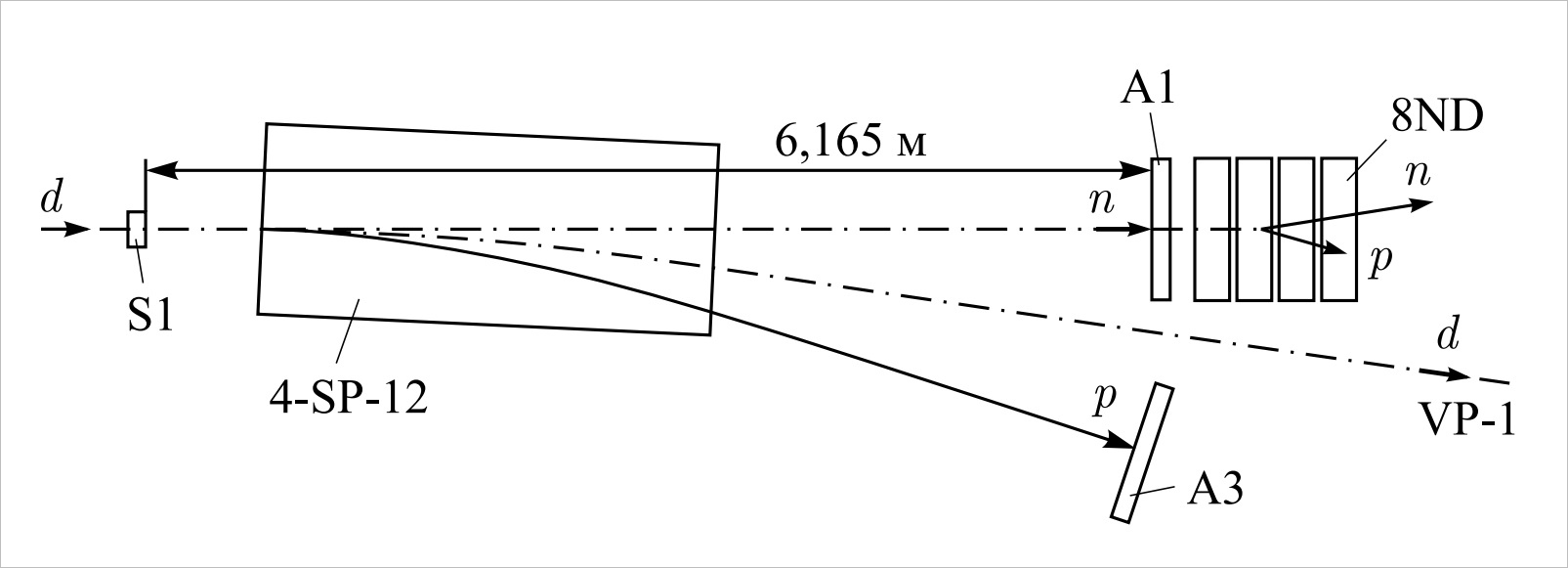 Scheme of experiment of studying neutron detector on Nuclotron extracted beam. View from above. S1 — target; 4-SP-12 — electromagnet; A1, A3 —anticoincidence counters; 8ND — prototype of neutron detector; VP-1 — channel for passing deuterons that did not interact with target
Scheme of experiment of studying neutron detector on Nuclotron extracted beam. View from above. S1 — target; 4-SP-12 — electromagnet; A1, A3 —anticoincidence counters; 8ND — prototype of neutron detector; VP-1 — channel for passing deuterons that did not interact with target
“We additionally create a magnetic field in which only the proton will bend. But the magnetic field does not act on the neutron as a neutral particle, and its trajectory remains the same. An electrically charged proton bends in a magnetic field. By the curvature trajectory in a particular magnetic field, you can find out the momentum of the proton, and then register it using, for example, a scintillation detector. Then we look at the efficiency and how the produced neutrons interact with the neutron detector,” Dmitry Dryablov said.
In 2011 – 2012, neutron detectors of the SCAN-3 experimental facility located in the area of the internal target of the Nuclotron accelerator were already tested at the Nuclotron accelerator. “The magnetic spectrometer SCAN-3 is primarily aimed at searching for one of the types of exotic nuclei, i.e. eta meson nuclei, in which the eta meson is bound to the nucleons of the nucleus by the forces of attraction. The study of the interaction between the nuclear medium and the eta meson will enrich our knowledge about the properties of the nuclear medium. One of the tasks of the experimental facility is to detect and determine the characteristics of a pair of particles correlated in angle and energy from different decay channels of the eta-meson nucleus. The use of the neutron detector in the facility will allow us to study an additional decay channel of this exotic nucleus and obtain new experimental data. Staff members of our sector develop, assemble, and test neutron detectors for the SCAN-3 facility themselves,” Dmitry Dryablov said.
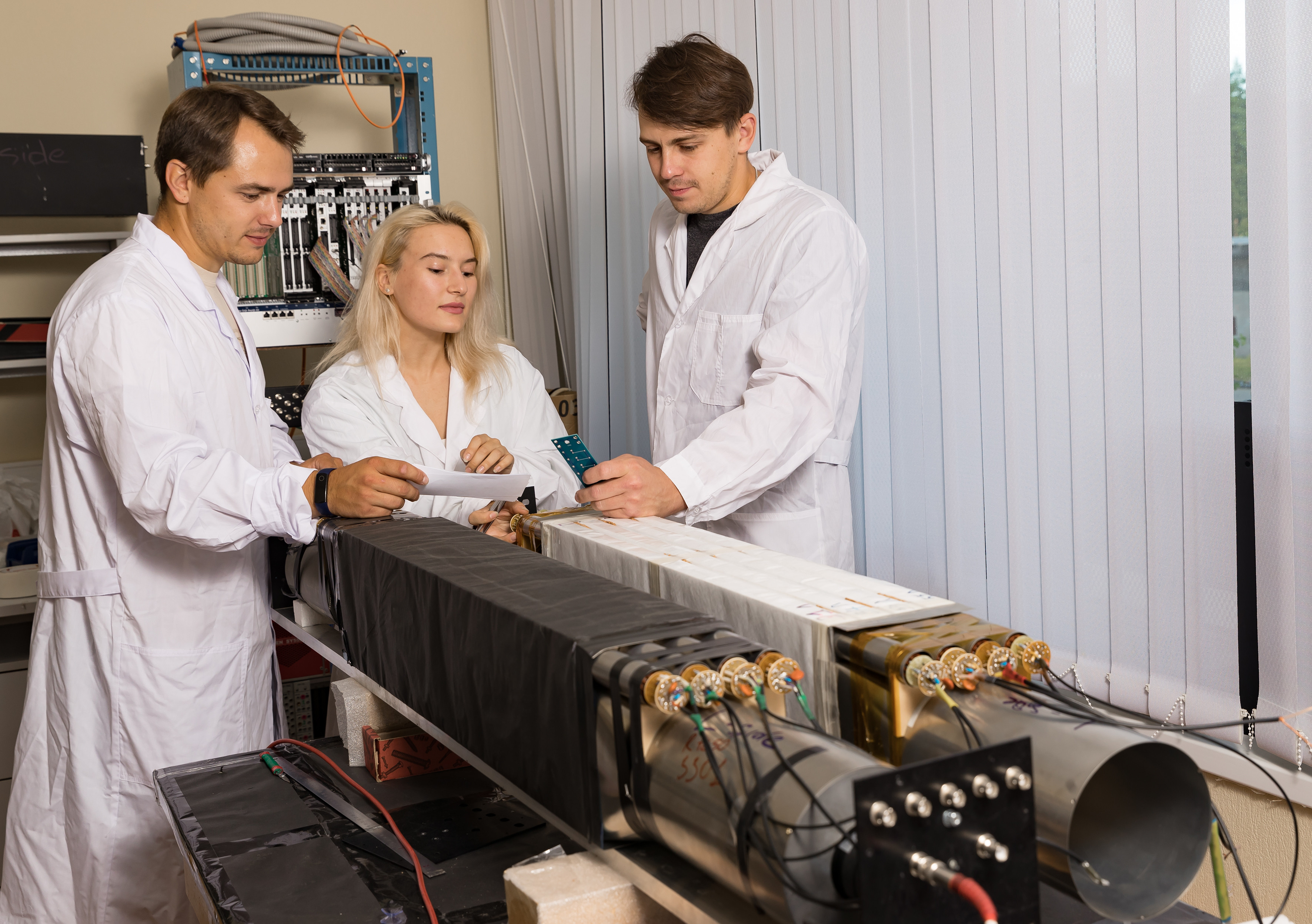 Evgeny Sukhov, Olga Kutinova, and Valentin Ustinov, staff members of VBLHEP JINR Sector of Correlation Research of Scientific and Experimental Department of Heavy Ion Physics, are checking accuracy assembly of neutron detector module, which will be used in SCAN-3 experiment
Evgeny Sukhov, Olga Kutinova, and Valentin Ustinov, staff members of VBLHEP JINR Sector of Correlation Research of Scientific and Experimental Department of Heavy Ion Physics, are checking accuracy assembly of neutron detector module, which will be used in SCAN-3 experiment
With the commissioning of the NICA accelerator complex, a complex of physical facilities for applied research will be located in the building with fixed targets. The testing of neutron detectors is planned be among these applied tasks.